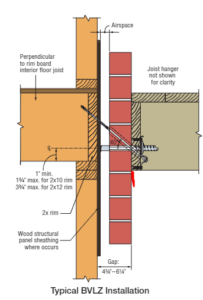Hard bid pricing is a standard in the building industry that after several years in decline appears to be making a come back. In a hard bid situation, multiple contractors take the same set of plans and specifications and at the end of the bid period provide a cost for the project. The bid can be as simple as a bottom line number, or it can include alternates, adds, deducts and potentially be broken down.
Generally speaking contractors do not like hard bid and prefer negotiating pricing on projects. In recent years I’ve known several general contractors who didn’t bid to win any of their work. However with the economic downturn, the market has become very competitive and more owners are turning to the hard bid delivery. The owner perception is that they receive the lowest price with this method.
Hard bid can work well or it can be a disaster, the challenge is in setting up the hard bid the right way. These steps are essential if an owner wants to hard bid work to multiple contractors:
1. Prequalify your general contractors. Nothing will do more to damage your project than openly bidding to anyone who comes along. If you want to really be able to compare the bids, the general contractors need to be comparable. Look at their size, their experience and the health of the company financials. This will also help you to understand differences in how their bids appear with self performed work, bonding and insurance.
2. Prequalify subcontractors on challenging trades. In some cases, none of the trades will be big swing items, but if you have some challenging items that are unique to your project you might force the generals to only take bids from a limited group of subcontractors. An example on a recent project was a subcontractor who could repair a 50 year old concrete finish, the owner had used many in the past and was only happy with the performance of a few, so their names went into the specification.
3. Use a high quality set of construction documents and specifications. From the architect’s perspective this is one of the biggest items that you want to do to protect yourself as the owner. In a hard bid, its not enough to say painted drywall as a finish, you actually need to specify the thickness of drywall, the level of finish, the number of paint coats and the sheen, otherwise each team makes their own assumptions. Where you don’t have a good set of drawings and specifications is where you’re likely to see a low bidder who comes back with many change orders during construction. Its also important to let your architect know that you are planning to do a hard bid so that is factored into the construction documents.
4. Generate a bid form that breaks down the bids. A bid form that only asks for a price does not aid you in deciding which contractor to use. Rather your bid form should ask for a price, add alternate pricing, deduct alternate pricing and a percentage for general conditions, overhead and profit. This allows you to understand how to adjust bids if necessary to meet your budget and also allows you to control mark-up on changes during construction. Additionally, I prefer to see a breakdown by division for their pricing. Sometimes you’ll find that one contractor is high because they have a very high number in one trade. with that trade swapped out they could become low bid. Another item that I’ve used is a line for unit prices. In example, if the amount of sidewalk might grow, asking for a per square foot price on sidewalk helps control that change order.
5. Allow adequate time for bidders to ask questions and receive answers. The timeline for bidding is highly variable and generally is between 2 and 6 weeks. It is important to have a job walk after the bidders have received the drawings and then give them time to ask questions, time for the architect to answer the questions and time for them to incorporate the answers. It is also important in a hard bid to stick to the dates, ask for questions in writing and respond to all bidders with written answers.
6. Do not commit to taking the low bid. Rather, take the most beneficial bid. After you’ve gone through the entire process you may take all of the information and find that the low bid is not necessarily the best bid. In some scenarios owners are obligated to take the low bid, but if you aren’t, it is important to let the bidders know that. After the bids are in, you may want to call some of the bidders in and ask additional questions to clarify who is the right choice










